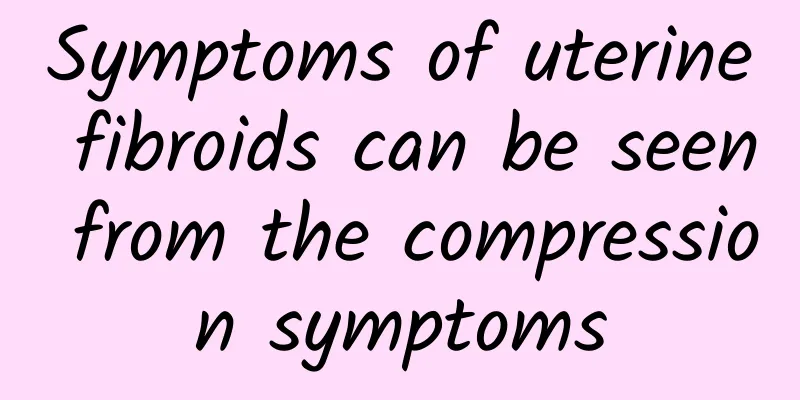What are the dangers of threatened abortion?

|
Threatened abortion is a common and special type of abortion. If threatened abortion is discovered, measures to preserve the fetus can be taken. If examination reveals that the threatened abortion is caused by congenital reasons, abortion treatment will be required. In fact, threatened abortion has many dangers and poses a constant threat to pregnant women and fetuses. Let me introduce the dangers of threatened abortion. There are symptoms of miscarriage, but after treatment to preserve the pregnancy, the pregnancy may not continue to full term. It often occurs in early pregnancy, with early-onset reaction, a small amount of vaginal bleeding, less than the menstrual volume, accompanied by slight intermittent uterine contractions, which is called threatened miscarriage. Early threatened miscarriage occurs within 12 weeks of pregnancy, and late threatened miscarriage occurs after that. In addition to the possible fatal harm to the fetus, threatened miscarriage also has the following harms to the pregnant woman's body: 1. Heavy blood loss Sometimes, miscarriage or incomplete miscarriage can cause severe blood loss or even shock. Therefore, it should be treated actively. Various measures can be taken at the same time. Intravenous or intramuscular injection of oxytocin or posterior pituitary hormone 10U. Try to give the patient a blood transfusion. In the absence of a blood bank, medical staff or their families can be mobilized to donate blood. If blood is really not available for the time being, dextran can be temporarily dripped intravenously. At the same time, curettage is performed. After the fetal tissue is removed, the bleeding often stops. Even if there is an infection, large pieces of fetal tissue should be removed. Then, conditions should be actively created for blood transfusion. 2. Infection All types of abortion can be complicated by infection, and it occurs more frequently in incomplete abortion. Infection often occurs when abortion is performed with instruments that have not been strictly sterilized; the instruments damage the cervix: or there are original infection lesions in the uterine cavity, which can cause the spread of infection after surgical abortion or spontaneous abortion. In addition, not paying attention to hygiene after abortion (natural or artificial abortion), premature sexual intercourse, etc. can cause infection. Infectious pathogens are often a variety of bacteria, mixed infections of anaerobic and aerobic bacteria. In recent years, various reports have shown that anaerobic bacteria account for the majority, up to 60-80%. The infection can be confined to the uterine cavity, or it can spread to the periphery of the uterus, forming salpingitis, salpingo-oophoritis, pelvic connective tissue inflammation, and even beyond the reproductive organs to form peritonitis and sepsis. The patient has chills and fever, abdominal pain, vaginal bleeding, sometimes with foul-smelling secretions, tenderness of the uterus and appendages, poor uterine involution, leukocytosis and other inflammatory manifestations. In severe cases, septic shock may occur. Blood, cervical or uterine cavity secretions can be smeared and cultured (aerobic and anaerobic bacteria). B-ultrasound examination to check whether there is any residual tissue in the uterine cavity. The principle of treating threatened abortion is to preserve the fetus, but because abnormal fertilized egg is a common cause of miscarriage, forcing the fetus to be preserved will often result in malformed or defective babies. From the perspective of eugenics, if general treatment is ineffective, termination of pregnancy should be advocated. |
<<: Nursing care for complications of threatened abortion
>>: Rational use of drugs for threatened abortion
Recommend
How to use medication correctly for patients with pelvic inflammatory disease
How do patients with pelvic inflammatory disease ...
What should I pay attention to after treating cervical erosion?
What should I pay attention to after treating cer...
What are the symptoms of perimenopausal syndrome
The main symptoms of perimenopausal syndrome are:...
What medicine should I take if I have anemia and uterine fibroids? How can I take medicine if I have anemia and uterine fibroids?
What medicine should I take if I have anemia and ...
Experts explain scientific methods for diagnosing cervicitis
There are many clinical diagnostic methods for ce...
Don’t dare to eat after exercise, fearing that it will be in vain and difficult to maintain your body shape? Eat enough nutrition to maintain your body shape and sustain your energy
In recent years, sports have become increasingly ...
What are the symptoms of endometriosis
Endometriosis is a common gynecological disease t...
Pay more attention to atrophic vulvar leukoplakia
What is atrophic vulvar leukoplakia? Women must w...
How long before menopause did you have menstrual symptoms?
Before menopause, symptoms such as irregular mens...
Are you a skinny fat person or a puff person? Nutritionist reveals: 6 foods that accelerate fat loss during exercise
Are you a puff person who is thin on the outside ...
Patients with ectopic pregnancy need to be cared for in life
Among gynecological diseases, ectopic pregnancy i...
Is it true that eating bananas can help you lose weight? Nutritionist: Choose this color of banana, it has more resistant starch and makes you feel full easily
Many people are asking: "What can I eat to h...
What is the method for detecting cervical warts?
Nowadays, experts say that cervical warts are a s...
What kind of ring is suitable for patients with adenomyosis
What kind of ring is good for patients with adeno...
What are the health care issues for menopausal women?
In today's society, due to the influence of v...









